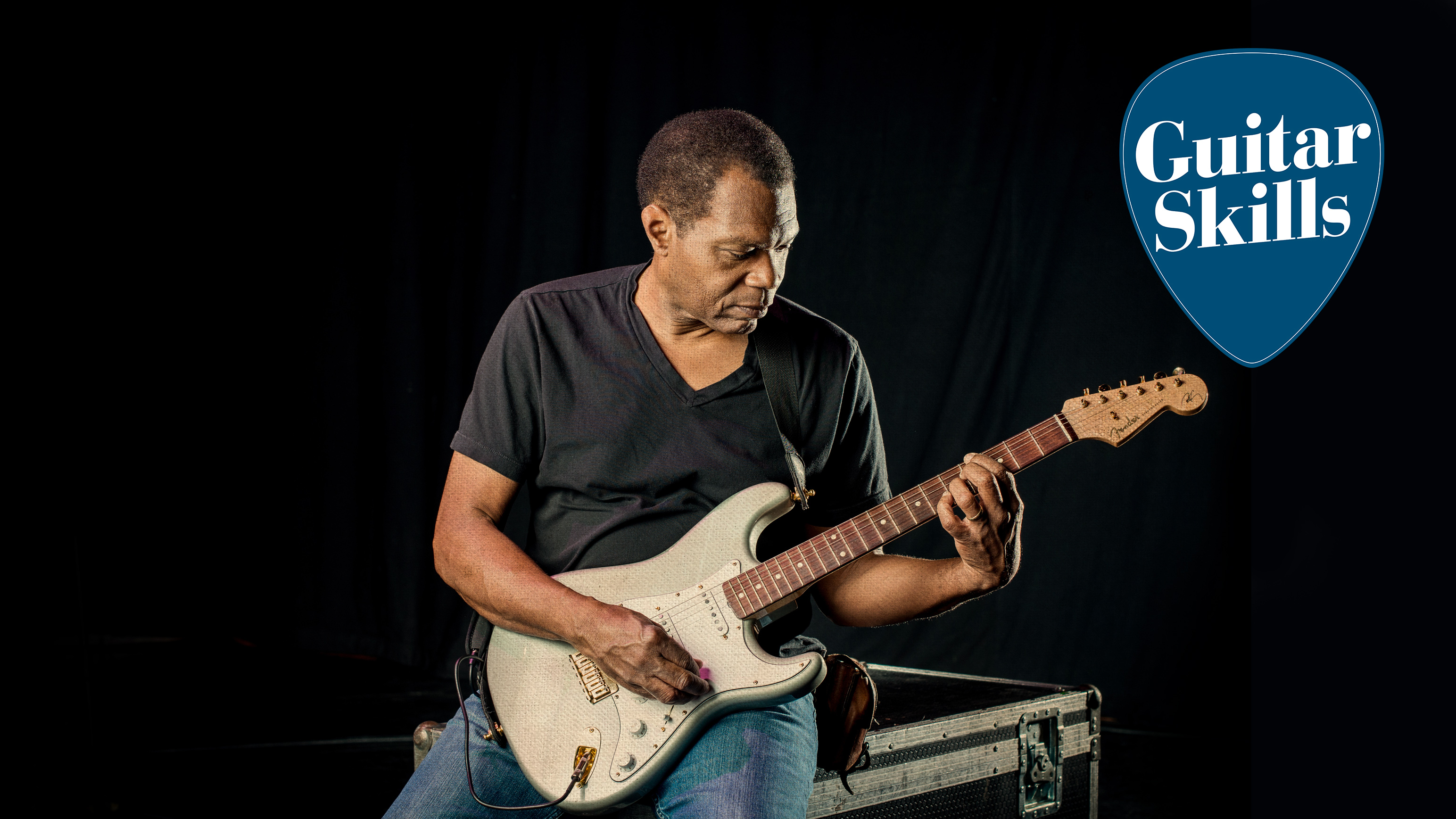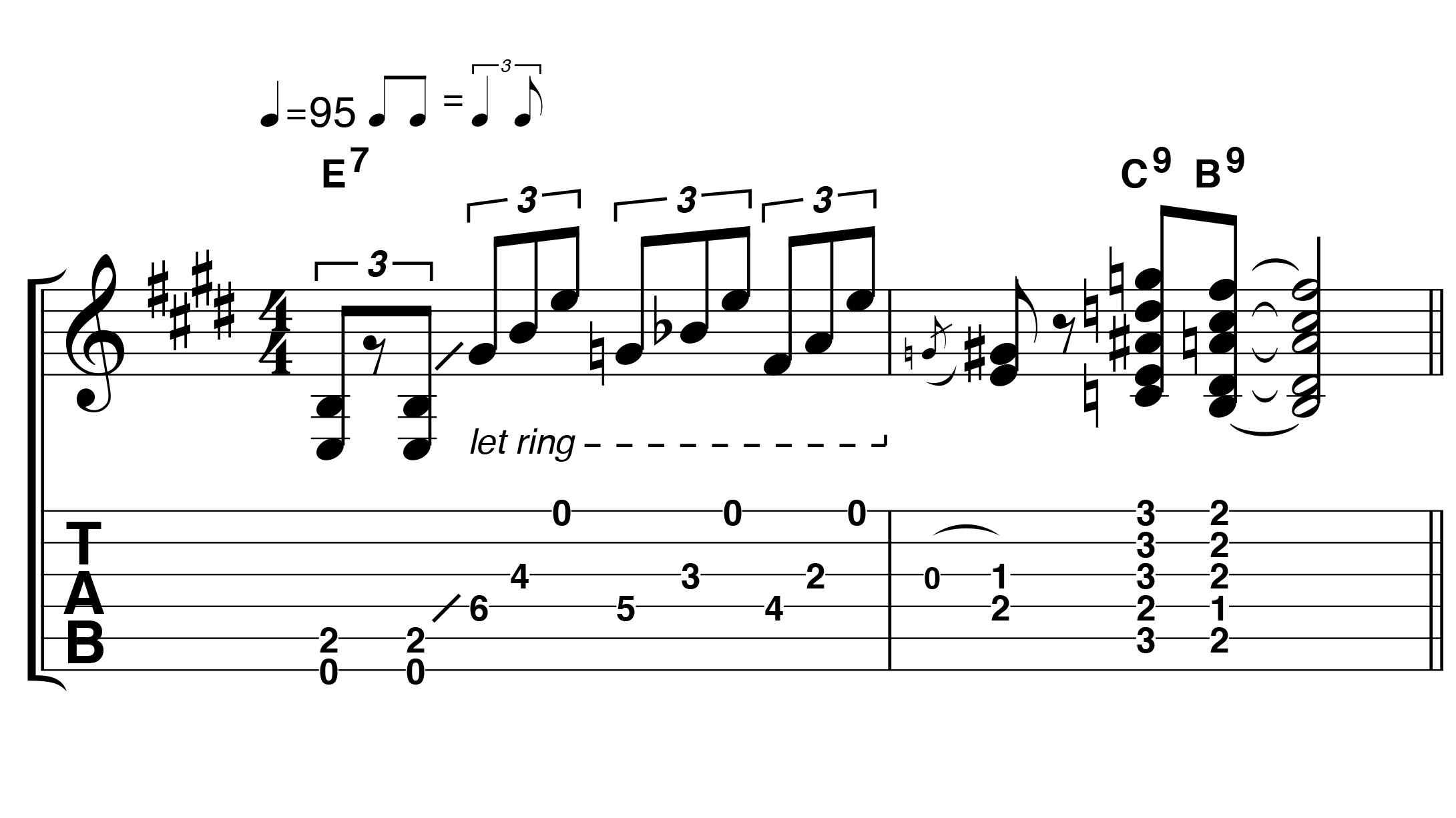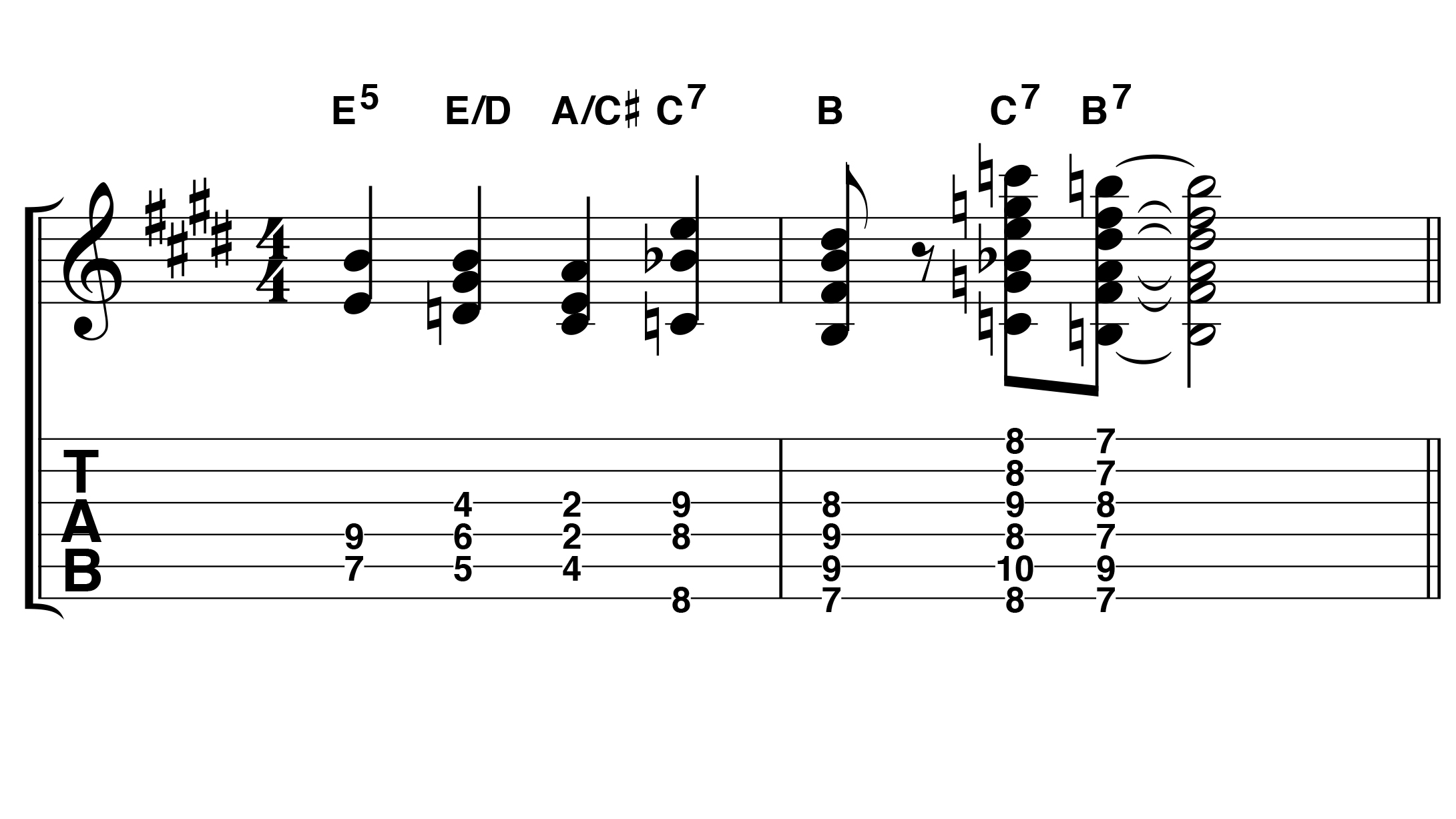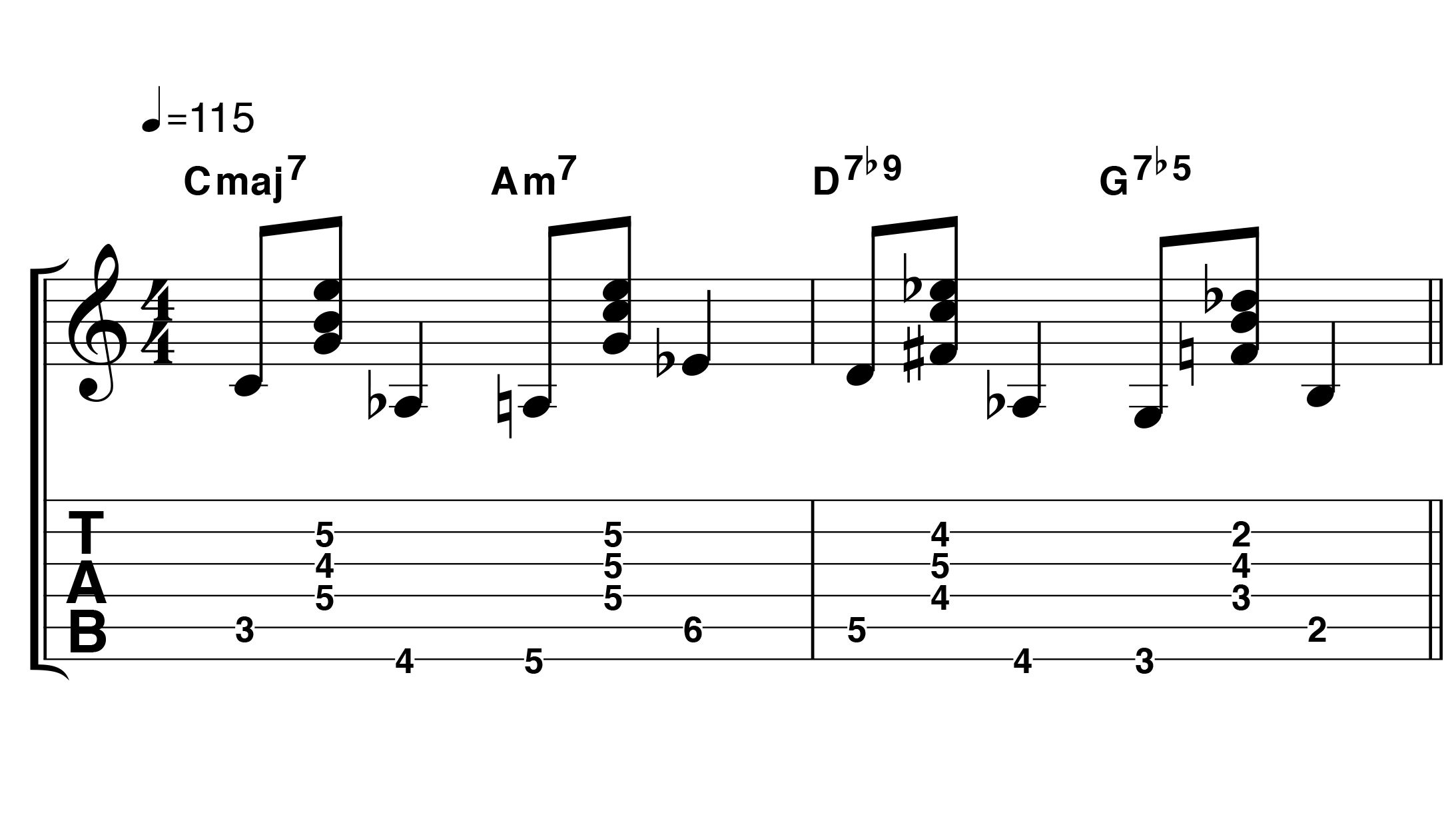Learn 3 blues guitar turnarounds to enhance your playing
Simple and timeless changeovers to try

Guitar lessons: Adapted for styles as diverse as rock, blues and jazz, the humble turnaround has been used for more than 100 years. These clever changeovers lead the listener’s ear with a strong ‘pull’ back to the beginning of the progression, giving the feel that you are recycling or ‘turning around’ the whole chord sequence.
In a standard 12-bar blues, the turnaround typically occurs in the last two bars. The simplest idea is to use a ‘V chord’ to lead you back to the root chord. In the key of E, B7 (the V chord) has this leading effect into the E root chord. There are many variations on this theme, and we’ll look at three common ideas.
1. Basic blues turnaround
This turnaround in E uses a common descending pattern in bar 1 that’s based on an E major arpeggio, moving down chromatically. The B9 chord in bar 2 is a bluesier variation on B7 (made more bluesy by approaching from a C9). If this were a full 12-bar blues, you’d expect an E root chord to follow the B9 as you restart the progression.
2. Contrary motion
There are two common moves in a blues turnaround: a descending run (E, D, C#, C, B) and an ascending (E, G#, A, Bb, B). They both finish on the crucial B root note of the all-important V chord. Here, we combine both patterns, moving in opposite directions.
Practise first with the higher notes to hear the strong sound of this turnaround.
3. Jazz turnaround
The blues turnaround isn’t limited to a V-I move. In some blues progressions, and especially jazz, a I-VI-II-V chord progression extends the idea with more complex harmony. Normally in C, the chords would be Cmaj7, Am7, Dm7, G7. We’ve ‘jazzed’ them up with a Joe Pass-style walking bass line.
5 essential blues guitar turnaround solos
Want all the hottest music and gear news, reviews, deals, features and more, direct to your inbox? Sign up here.
Total Guitar is Europe's best-selling guitar magazine.
Every month we feature interviews with the biggest names and hottest new acts in guitar land, plus Guest Lessons from the stars.
Finally, our Rocked & Rated section is the place to go for reviews, round-ups and help setting up your guitars and gear.
Subscribe: http://bit.ly/totalguitar



